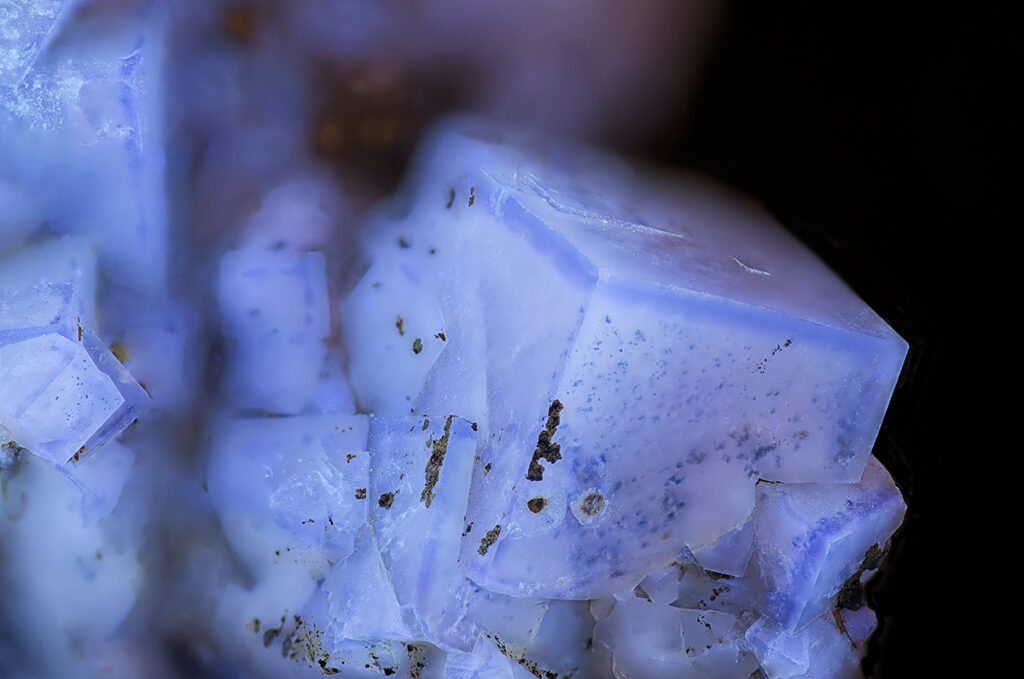As part of an event for the Vienna Microscopy Society on 11 March 2025, I explained how to photograph fluorite under UV light.
The fluorite comes from the Black Forest, i.e. Germany, specifically from Hesselbach/Oberkirch. I bought this specimen from Erik Wagner.
What equipment was used:
- 2 Raytech mineral illuminators that allow excitation at 254 nm; these illuminators can also be excited at 365 nm using a second built-in illuminant. However, excitation at this wavelength leads to a violet appearance of the fluorite, which is unattractive and lacks contrast.
- Two ‘home-made’ lamp tripods to enable the two Raytech lights to be optimally positioned.
- The Nikon Z9 was used as the camera, remote control via a MAC-Book Pro 16’ (connected to the Smart Shooter software via USB-C cable).
- Sigma macro lens 1:2.8/180 mm in the 1 to 1 setting, connected to the camera via the FTZ II adapter.
- Tripod for the camera
- The image signal was transferred to the Eizo 32’ screen.
- Cardboard lens hoods to keep the low-wavelength UV light away from the eyes.
- Tesatur adhesive tape to seal the eyepiece
We worked with the camera's internal focus stacking function, 300 single images with focus shift setting 4.
The exposure setting was made purely via the histogram. Care was taken not to produce any clipping in the shadows and highlights. To take the photos, it was necessary to darken the room and photograph at ISO 2000. The resulting higher noise was accepted as a compromise and then successfully reduced with appropriate noise reduction in the RAW converter DXO Photo Lab 8.0. As the calculation of an optimum noise reduction takes several hours, a slight noise reduction was used during the event for demonstration purposes so that the results could be discussed immediately.
The 300 individual shots were processed into a TIFF using Helicon Focus and the image was optimised in Photoshop and the small amount of dust remaining on the object was retouched.
